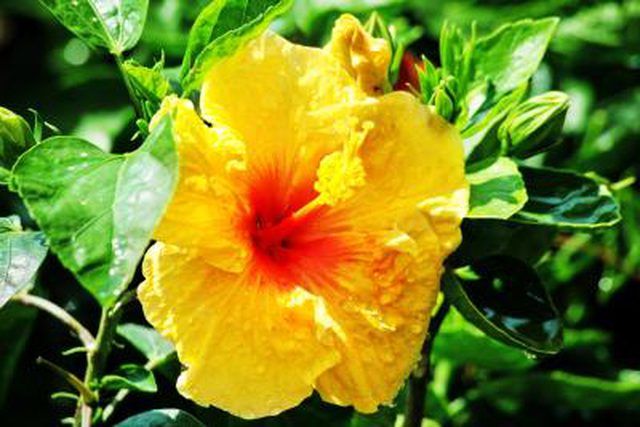Bulbs
Flower Basics
Flower Beds & Specialty Gardens
Flower Garden
Garden Furniture
Garden Gnomes
Garden Seeds
Garden Sheds
Garden Statues
Garden Tools & Supplies
Gardening Basics
Green & Organic
Groundcovers & Vines
Growing Annuals
Growing Basil
Growing Beans
Growing Berries
Growing Blueberries
Growing Cactus
Growing Corn
Growing Cotton
Growing Edibles
Growing Flowers
Growing Garlic
Growing Grapes
Growing Grass
Growing Herbs
Growing Jasmine
Growing Mint
Growing Mushrooms
Orchids
Growing Peanuts
Growing Perennials
Growing Plants
Growing Rosemary
Growing Roses
Growing Strawberries
Growing Sunflowers
Growing Thyme
Growing Tomatoes
Growing Tulips
Growing Vegetables
Herb Basics
Herb Garden
Indoor Growing
Landscaping Basics
Landscaping Patios
Landscaping Plants
Landscaping Shrubs
Landscaping Trees
Landscaping Walks & Pathways
Lawn Basics
Lawn Maintenance
Lawn Mowers
Lawn Ornaments
Lawn Planting
Lawn Tools
Outdoor Growing
Overall Landscape Planning
Pests, Weeds & Problems
Plant Basics
Rock Garden
Rose Garden
Shrubs
Soil
Specialty Gardens
Trees
Vegetable Garden
Yard Maintenance
How to Care for a Hibiscus Tree
How to Care for a Hibiscus Tree. The genus Hibiscus contains perennial and tropical species; the hibiscus trees are typically tropical hibiscuses (Hibiscus rosa-sinensis). These plants add an island feel to any landscape or home. The flowers, which come in an artist's palette of colors, reach up to 6 inches in diameter. The tree form is a common...

The genus Hibiscus contains perennial and tropical species; the hibiscus trees are typically tropical hibiscuses (Hibiscus rosa-sinensis). These plants add an island feel to any landscape or home. The flowers, which come in an artist's palette of colors, reach up to 6 inches in diameter. The tree form is a common offering at nurseries and plant centers, particularly in mid- to late-spring. Caring for these tropical plants isn't always difficult, but they are picky when it comes to certain requirements.
Keep It Hot
Tropical hibiscus is hardy in U.S. Department of Agriculture plant hardiness zones 9 and 10, although even these warmer climates can cause trouble. Native to tropical areas of Asia, these showy plants can't handle extreme changes in temperature. For much of the U.S., these plants will thrive during the summer but need to come inside if you want to overwinter them. If 90 degrees Fahrenheit or hotter, move your braided hibiscus tree to a partly shaded spot to protect it from the hot afternoon sun. If temperatures are going to fall below 45 degrees F at night, move the plant to a protected area such as a garage or inside.
Protective Pots
Potted hibiscuses tend to do better than ground-planted hibiscuses, primarily because of their tendency to be picky about moisture, acidity and temperature. Ideally, the pot should have at least four drainage holes. Black plastic pots, common in the nursery industry, can heat up too much. Ceramic or clay, while more expensive, is a better material for your hibiscus. Growers often use a mix of 5 percent perlite, 50 percent peat or coco fiber, and 45 percent composted bark as a growing medium. Repot into the next larger size of pot when the roots begin wrapping around each other. Place a small amount of new potting mix in the bottom of the new pot, disturb the root system of your hibiscus with your fingers, and place it into the pot. The top of the root ball should be approximately 1 inch below the rim of the pot. Fill the pot with fresh potting mix, and work it in gently with your fingers to get it to settle; press the top of the soil firmly around the hibiscus and water thoroughly.
Food and Drink
Applications of a water-soluble fertilizer specifically designed for tropical hibiscus is an ideal fertilizer for these plants. These fertilizers have low phosphorus, and often an N-P-K ratio of 9-3-13 or 10-4-12. Water your potted hibiscus thoroughly and apply 1 teaspoon of granular 10-4-12 hibiscus food for 6- to 12-inch pots, or 2 teaspoons for 14-inch or larger pots; water again after application. Feed once per month or every six weeks. Hibiscus plants can't handle being waterlogged; allow the soil to dry before watering. Water more frequently in hot weather.
In the Ground
Choose a location with well-drained soil if you live in an area that stays warm enough -- USDA zones 9 and 10 -- to plant your hibiscus tree outside in the ground. Clay soils will remain too waterlogged for these tropical plants; sand soils will drain too quickly. When in doubt, plant in a raised bed. Water frequently when temperatures are hot, keeping the root system in moist soil.
Maintaining Your Plant
Pruning hibiscus trees is an option, although not always necessary. A selective prune is often the best option for hibiscus and hibiscus trees. Prune in autumn as you bring your potted plant indoors for the winter. Prune older branches down to the second or third nodes, the small nubs where new branches or leaves come out. As for pests, hibiscus is prone to white flies and mites in particular. To control them, smother with insecticidal soap, an organic-safe insecticide. Spray the leaves thoroughly, including the undersides, and the stems -- anywhere these small pests are present. Repeat every two or three weeks until the infestation is gone.